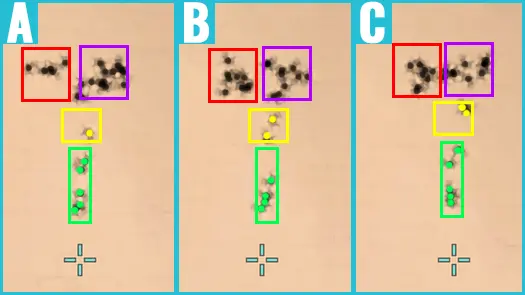
Explaining Valorant weapon spray patterns and if they’re random
The spray patterns on Valorant’s weapons might seem random, but its weapons are actually easier to control than in many other popular first-person shooters.
Any player that has spent time in competitive tactical shooters has dealt with mastering recoil control. And even though Valorant’s spray patterns are nearly identical to those in Counter-Strike: Global Offensive, both games have built-in randomness to where exactly a player’s bullets end up. When firing a weapon in either game, weapons will recoil in a predictable way, allowing players to learn how to offset that recoil by moving their mouse in the opposite direction. Taking a closer look at the spray patterns in both games shows that Valorant’s weapons have less inaccuracy applied to the first several bullets of a spray, and also some very interesting information about how randomness may apply at the end of its weapon sprays.
How random are Valorant’s weapon sprays?
Some players feel like Valorant’s extended spray accuracy is lower when compared to CSGO. They’re right, but while each bullet is less accurate, spraying with Valorant’s weapons is actually easier to control. That may sound confusing, but it’s due to how quickly Valorant’s weapons change the direction of their side-to-side recoil. This is especially true with the Vandal, which gives players the best example of how Riot’s shooter can have more inaccurate bullets individually but be more accurate overall. By comparing sprays from Valorant to CSGO, players can see the distinct difference between full sprays.
After shooting 100 Vandal sprays inside Valorant’s practice range, three were randomly selected and compared to one another. The results show that each spray can be divided into four distinct sections that are represented by the colored boxes.

There are actually six total stages of recoil as the weapon’s bullets recoil back and forth between the red and purple boxes towards the end of the spray. But when compared to CSGO, Valorant’s quick snaps in recoil make them easier to control. After six to seven bullets, the Vandal makes a hard right snap. All bullets after that are represented inside the red and purple boxes. The other 97 sprays all consistently fit into the above sections. But CSGO’s AK-47 is very different.
CSGO’s sloping recoil style is different than Valorant’s sharp recoil turns
WIN.gg compared the spray patterns of Valorant’s Vandal to CSGO’s AK-47. We fired several magazines from each weapon to create an average recoil spread. The results were strikingly similar when comparing the average recoil. But by looking at the spray patterns individually, some might say that CSGO’s sloping recoil lines are harder to control than Valorant’s snappy ones.

Each game applies randomness to its weapons differently and Riot hasn’t provided a command to let players take a look at the Vandal’s pattern with that randomness turned off. CSGO does provide such a tool. The image below highlights three sprays from CSGO’s AK-47. One with the randomness disabled, followed by two full sprays with the random inaccuracy turned back on.

There are areas, especially the red square for “spray 1” and “spray 2,” where the random effect is most noticeable. But because the AK’s recoil pattern is a gentle slope instead of a hard horizontal break, it’s harder to control than Valorant’s predictable right to left swing.
In other words, if controlling Valorant’s recoil is like drawing a square, CSGO’s is more like trying to draw a circle.
In the end, Valorant requires a different aim control style than CSGO. Players coming from CSGO that struggle with Valorant’s sprays should try to ditch their existing movements of CSGO recoil control. Succeeding here is as simple as hopping into the range and flicking from left to right.
Recommended

Can a VPN really lower your game ping? Myths vs. reality
Do you really need it?

MrBeast takes action on Ava controversy, responds to allegations
MrBeast has launched a private probe.








